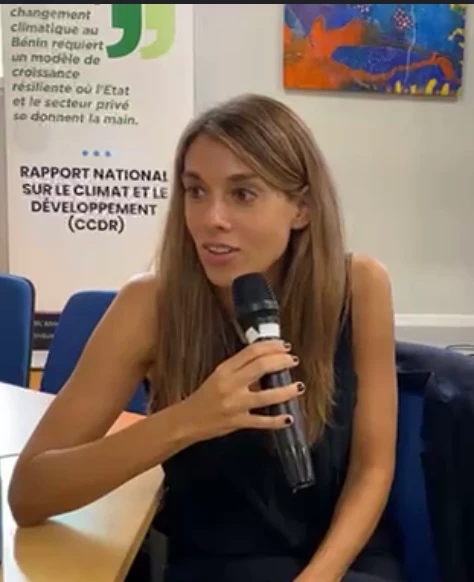In 2002, Sao Paulo’s embarked in one of the most transformative transport projects of the decade: the construction of Metro Line 4. The new line had big ambitions: it was meant to significantly improve the commuting experience, better connect the south and western regions of the Sao Paulo Metropolitan Region (SPMR) to the center, change the metro system from a radial to a flexible network, and interconnect all transport modes, including buses, suburban trains (CPTM), bicycles, as well as existing and future metro lines.
Line 4 was also the first metro project in Brazil to be designed as a Public-Private Partnership, whereby operation and maintenance (O&M) was concessioned to a private company for 30 years. The project was segmented into 2 construction phases, both of which were technically and financially supported by the World Bank from 2002.
When finished, Metro Line 4 will feature a total of 11 stations along a 14.4-km alignment, 29 trains in operation, four integrated bus terminals, and one dedicated train yard. It will carry nearly 1 million passengers per day. Since the opening of the first segment in 2010, the line has experienced high passenger traffic and allowed for a significant reduction in journey times. In 2012, Line 4 even featured among the 100 most innovative infrastructure projects in the world.
A new station was inaugurated just a few weeks ago, and the line is now just one station away from completion. Once the whole project is operational by 2020, aha resident of Vila Sonia in the western part of the city will need only 20 minutes to reach Luz station at the opposite side of the city, compared to one hour in 2002.Today they can already reach it in 32 minutes!
Now that the Line 4 odyssey has almost concluded, it can teach us a number of valuable lessons about what it takes to implement such complex infrastructure projects in a dense urban area like Sao Paulo:
- Financing models and procurement can make or break a project, so you need to choose your model wisely! These decisions are crucial to making sure projects can be implemented on time and on budget. Project teams need to define their financing and procurement approach on a case-by-case basis in order to factor in the specifics of the local context and anticipate challenges such as red tape or judicial bottlenecks. During Phase 1, Metro used a turnkey contract which proved to be an efficient way to reduce delays when compared to Phase 2 (unit price model). Contrary to unit price models, with a turnkey, a global price for the project construction is agreed beforehand minimizing the need to negotiate every item.
- The sequencing of civil works is key. The appropriate sequencing of civil works is important to avoid unnecessary delays. This was particularly important for Phase 2, which features complex stations located in the middle of an operating line in a dense urban environment.
- Interface risk between systems and civil works needs to be factored in. Some systems—platform doors, permanent ways, for instance—are more dependent on the civil works completion and endings. That’s why it is important to assess interface risk appropriately at entry. Understanding which systems need to be bundled with civil works into a single contract is important to avoid additional costs, delays, and penalties.
- Continuity in Project Management is needed. It is important to ensure continuity and ongoing supervision in long, complex projects. A Project Management Oversight Consultant (PMOC) has accompanied the works of Line 4 since Phase 1. The oversight consultant reported directly to the World Bank team and senior management at the implementing agency. The PMOC supported the World Bank team across changes in the implementing agency and government counterparts, ensuring continuity.
- Infrastructure investment and policy reforms should go hand in hand. In 2006, the introduction of an integrated fare system–the Bilhete Unico Integrado–made it easier for commuters to transfer between the metro and other modes of public transport. The transition not only allowed for more seamless travel across the metropolitan area, it was also key to sustaining demand for the new metro service. To advance government capacity in managing the system, the World Bank supported the development of an integrated planning tool, allowing for modelling different fare structures and the impacts on the several operators of the system.
- Learning from failures and criticism make for better projects. Mega-projects are often marred by delays, accidents, and design changes. While learning from mistakes is critical, this should not lead to a climate of risk aversion that paralyzes decision-making.
- Above all, flexibility is key. While some issues can be prevented, many cannot. In the case of Line 4, unexpected setbacks that delayed completion included the abandonment of works by the civil works contractor, as well as the unexpected contamination of the soil. Flexibility from Bank teams and management, the implementing agency and contracted private contractors are critical to the success of such complex undertakings. At the World Bank, the design and use of appropriate financing instruments, such as the Series of Projects (SoP) or the Multi-Phase Approach, where different phases of a complex project or reform can be financed in tranches under a common umbrella, should be contemplated further to support the achievement of long intricate infrastructure projects. Line 4 is a good example of an SoP type of loans, where the series was conceived to finance an entire urban transport project. More recently, the Bank has been using the same approach to finance Bogota’s first metro line.
Take the 360 tour of Line 4 construction and stations.


Join the Conversation